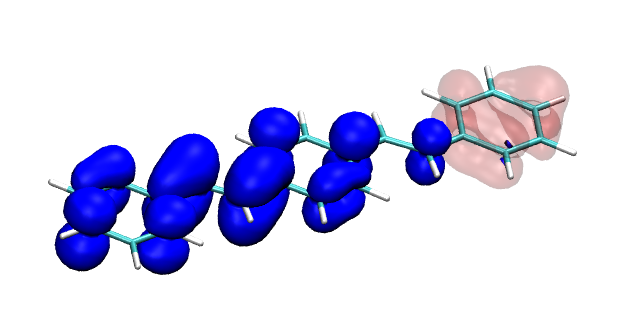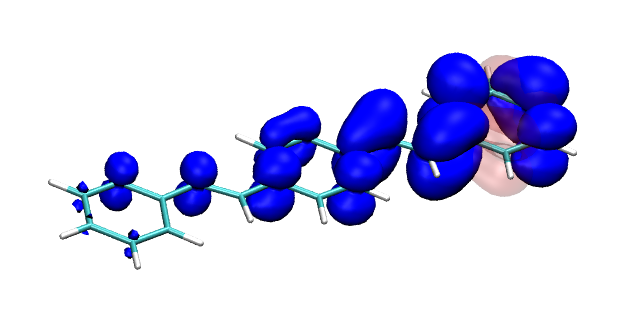Version 2.0 of the TheoDORE wavefunction analysis package has been released, download below. The two main features of TheoDORE 2.0 are the computation of conditional electron densities and compatibility with python3.
Conditional electron densities can be used for the visualisation of excited-state electron correlation, see ChemPhotoChem (2019). Below, the application of this method to a PPV oligomer is shown. Here, the probe hole (red) is always fixed on the terminal phenyl ring and the different shapes for the conditional electron density (blue) for the first six excited states is observed. One can see that for the different states the electron is either repelled, attracted or unaffected by the hole.
Thanks to work by Max Menger, TheoDORE has been made compatible with python3 and has been made more properly “Pythonic”. This required some restructuring of the code. Please, let me know if anything does not work anymore as expected.
Update: Please download the 2.0 release version, which includes some bugfixes.
Version 2.0 of the wavefunction analysis program TheoDORE. New features of TheoDORE 2.0:
- Compatibility to TM >= 7.2
- Some bugfixes related to python3
Also in 2.0_beta version:
- Conditional electron densities for the visualisation of excited-state electron correlation, see ChemPhotoChem (2019).
- Compatibility to python3 (by Max Menger)
- Plot dipole and quadrupole moments (draw_moments.py)
- Plot vibrations in Jmol (jmol_vibs.py)
- Simple script for analyzing geometry optimiziations (cc_opt.py)
- Support for fchk files from Q-Chem
- Automatic plotting of state characters (plot_Om_bars.py), see Coord. Chem. Rev., 361, 74-97 (2018).
- Volume integrals for vmd_plots.py





